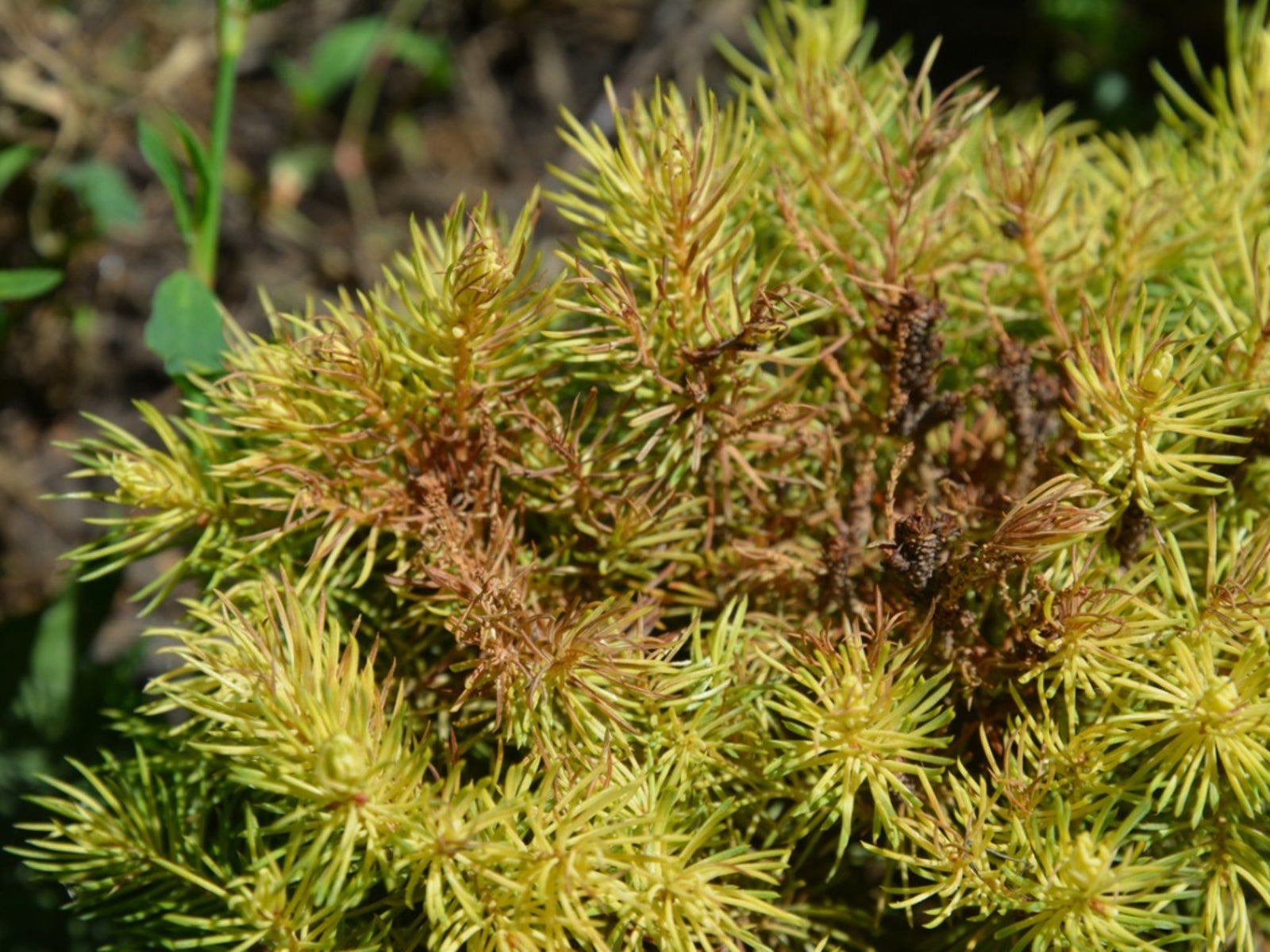Spider Mite Tree Damage: Control Of Spider Mites In Trees


It's surprising that such tiny creatures as spider mites can have such a big impact on trees. Even the largest tree can sustain serious damage. Read on to find out what to do about spider mites in trees.
About Spider Mites in Trees
Although we sometimes call them "bugs" or "insects," the fact that they have eight legs means that technically, spider mites are more closely related to spiders and ticks. They can seriously damage trees because they are present in large numbers. Each adult female can lay around 100 eggs and, in warm weather, they can have up to 30 generations in a year. The last clutch of eggs overwinters on the trees and waits until warm weather returns to hatch. That means that if you had spider mites last year, you will have them again this year unless you are using spider mite control for trees in your landscape. Make sure it is spider mites causing the problem, though, and not a disease or insect before you begin a program of spider mite control. The mites feed by sucking the chlorophyll out of the leaves, causing little white dots called stipples. When the mites are present in large numbers, the leaves turn yellow or bronze and drop off. Silk webbing over the leaves and tender shoots is another indication that you have spider mites. If you still aren't sure whether you have spider mite tree damage or another problem, try this test. Hold a piece of white paper under the tip of a stem with damage. Tap the tip of the stem so that specks fall onto the paper. Now wait a few minutes to see if some of the specks start to move. Moving specks means spider mites.
Control of Spider Mites
If the tree is small enough that you can reach all of the branches with a water hose, all you have to do is give it a forceful spray. Use as much pressure as the tree can bear without damage. Check for mites after the tree dries, and repeat as necessary. You can’t spray a tall tree forcefully enough to get rid of the mites for good, but trees benefit from a rinsing now and then. Spider mites thrive in dusty conditions, so rinse the branches as best you can and keep bare patches of ground lightly moist to eliminate flying dust. Predatory mites and lacewings are natural enemies of spider mites. There are many species of predatory mites, each with their own strengths and weaknesses when it comes to controlling spider mites. Try to find a local source where you can get help choosing the right species and determining how many you need. Chemicals are the last resort for pest control. Before you run out and buy the first product you can find, be aware that some make the problem worse. For instance, carbaryl (Sevin) makes spider mites reproduce faster, and pyrethroids add nitrogen to the leaves, making them tastier. Two good choices are horticultural oils and insecticidal soap. You should read and carefully follow the label instructions, especially when using horticultural oils. Using the oils at the wrong time may not solve the problem and can damage the tree. Spray insecticidal soap and horticultural oil until the products drip from the tree. Neither have lasting effects, so you may have to spray several times through the growing season.
Gardening tips, videos, info and more delivered right to your inbox!
Sign up for the Gardening Know How newsletter today and receive a free copy of our e-book "How to Grow Delicious Tomatoes".

Jackie Carroll has written over 500 articles for Gardening Know How on a wide range of topics.
-
 Looking For Plants To Give You The Soft And Fuzzies? Try These 5 Fuzzy Leaf Plant Options
Looking For Plants To Give You The Soft And Fuzzies? Try These 5 Fuzzy Leaf Plant OptionsLovers of texture, drama, silver foliage and tactile plants will adore these special sensory garden additions. These fuzzy leaf plant options will leave you all aglow
By Susan Albert
-
 Get Ready For A Summer Of Hummers! Grow These Full Sun Hummingbird Plants and Flowers
Get Ready For A Summer Of Hummers! Grow These Full Sun Hummingbird Plants and FlowersIf you’re lucky enough to enjoy a sunny backyard, make sure you are maxing out on your pollinator opportunities and grow these full sun hummingbird plants and flowers
By Tonya Barnett